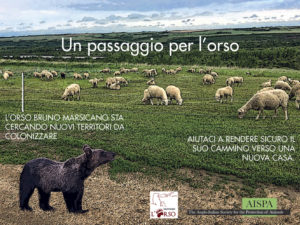 The commitment of Salviamo l’Orso for the coexistence between local communities and the Marsican bear has been restless in recent years. The results achieved were possible thanks to donations from our members, foundations and private organizations, especially foreign ones, such as Rewilding Europe, AISPA, IBA and Patagonia. We are grateful to all of them. Apart from rare exceptions, we found general tolerance from local communities towards those food-conditioned bears frequenting urban areas. Local administrations have not always shown the same sensitivity. True, the road to complete acceptance is still a long way off, but experiences like the Bear Smart Community Genzana show us that fieldwork always bears fruit. The survival of the most threatened bear in the world lies on larger spaces than parks and nature reserves, as some bears like Mario and Peppina – now also with her offspring – have taught us. We cannot be unprepared ahead of the conservation challenge that awaits us outside protected areas, because we want to be able to tell future generations stories of men and bears who have managed to share the same environment and not the chronicle of an impossible coexistence.
The commitment of Salviamo l’Orso for the coexistence between local communities and the Marsican bear has been restless in recent years. The results achieved were possible thanks to donations from our members, foundations and private organizations, especially foreign ones, such as Rewilding Europe, AISPA, IBA and Patagonia. We are grateful to all of them. Apart from rare exceptions, we found general tolerance from local communities towards those food-conditioned bears frequenting urban areas. Local administrations have not always shown the same sensitivity. True, the road to complete acceptance is still a long way off, but experiences like the Bear Smart Community Genzana show us that fieldwork always bears fruit. The survival of the most threatened bear in the world lies on larger spaces than parks and nature reserves, as some bears like Mario and Peppina – now also with her offspring – have taught us. We cannot be unprepared ahead of the conservation challenge that awaits us outside protected areas, because we want to be able to tell future generations stories of men and bears who have managed to share the same environment and not the chronicle of an impossible coexistence.
We ask for your help to support the prevention activities that engage us on various fronts in three regions! Please donate by following the instructions at this link!
http://www.salviamolorso.it/en/portfolio-items/a-passage-for-the-bear/

